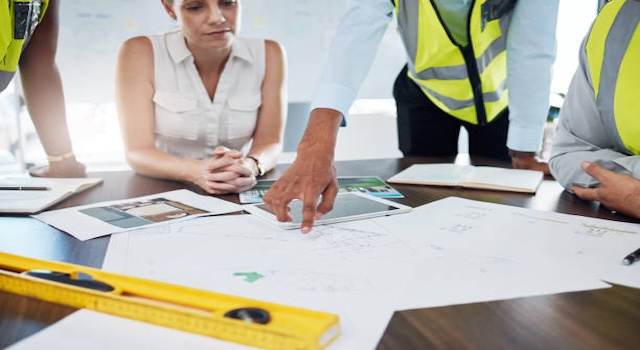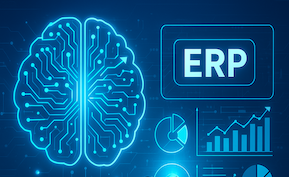Construction Management
Sustainability and Green Building Compliance in Construction Management Software

The construction industry is under increasing pressure to deliver projects that are not only profitable but also environmentally responsible. Rising regulatory requirements, corporate sustainability goals, and client demand for green buildings have made sustainability a central part of modern construction. For many firms, the challenge lies in balancing these demands with tight deadlines, budgets, and traditional building practices.
This is where construction management software with sustainability and compliance features comes into play. By embedding environmental metrics, compliance tracking, and green certifications into everyday project workflows, these platforms enable firms to design, build, and deliver projects that meet sustainability standards without sacrificing efficiency.
The Importance of Sustainability in Construction
Construction is one of the most resource-intensive industries in the world. It accounts for nearly 40% of global energy use and a significant portion of carbon emissions. As awareness grows, governments, investors, and communities are demanding greener practices from builders. For firms, sustainability is no longer optional—it’s a competitive necessity.
Clients increasingly prefer contractors who can demonstrate sustainable practices, and many projects now require compliance with standards like LEED (Leadership in Energy and Environmental Design), BREEAM (Building Research Establishment Environmental Assessment Method), or WELL Certification. Without the right tools, tracking these requirements can be overwhelming.
How Construction Software Supports Green Building
Modern construction management platforms offer features that simplify sustainability initiatives:
- Material tracking: Monitor sourcing to ensure materials meet recycled, renewable, or low-carbon requirements.
- Energy modeling: Integrate design and energy efficiency simulations to forecast building performance.
- Compliance management: Track LEED, BREEAM, or local green codes within the project’s documentation.
- Waste management: Record recycling, disposal, and landfill diversion rates.
- Carbon accounting: Capture data on emissions from equipment, materials transport, and jobsite energy use.
- Reporting dashboards: Create sustainability reports for clients, regulators, and investors.
These tools turn what was once a manual, spreadsheet-heavy process into a streamlined part of project management.
Key Benefits of Sustainable Construction Software
Integrating sustainability into construction software yields benefits across the board:
- Regulatory compliance: Stay aligned with increasingly strict environmental standards.
- Cost efficiency: Waste reduction and energy optimization lower operating costs.
- Competitive differentiation: Firms that meet or exceed green standards stand out in bids.
- Investor confidence: ESG-focused investors demand measurable sustainability metrics.
- Long-term value: Sustainable buildings often have higher asset values and lower lifecycle costs.
Examples of Software Features in Action
Some practical applications of sustainability tools include:
- Real-time compliance tracking: Platforms like Autodesk Construction Cloud can track LEED points as construction progresses, alerting teams when a target may be missed.
- Material lifecycle analysis: Tools help compare suppliers not only on cost but also on environmental impact, such as embodied carbon.
- Waste reduction dashboards: Systems like Procore enable contractors to log recycling rates and track landfill diversion goals.
- IoT integration: Connected sensors measure on-site energy and water consumption, feeding real-time data into sustainability reports.
Challenges in Green Building Compliance
Despite its benefits, implementing sustainability in construction projects is not without challenges:
- Data complexity: Tracking multiple metrics across different standards (LEED, BREEAM, WELL) requires robust integration.
- Cost concerns: Sustainable materials and processes can be more expensive upfront, even if cost savings come later.
- Knowledge gaps: Project teams may lack expertise in sustainability practices and need additional training.
- Client alignment: Not all clients prioritize sustainability, creating tension between compliance and budget goals.
Construction management software addresses some of these hurdles by centralizing compliance tracking and automating reporting, but cultural shifts and training are also essential.
Leading Platforms for Sustainability and Compliance
A few software providers are emerging as leaders in sustainability integration:
- Autodesk Construction Cloud: Strong BIM and design integrations with sustainability metrics.
- Procore: Robust documentation and reporting tools for waste and compliance tracking.
- Trimble ProjectSight: Lifecycle and asset management features geared toward sustainable outcomes.
- PlanGrid (Autodesk): Cloud-based documentation and compliance monitoring for distributed teams.
The Future of Sustainable Construction Software
The next generation of construction management software will go beyond compliance to offer predictive sustainability insights. For example, AI models may simulate the environmental impact of design decisions in real time, helping teams select the most sustainable options before construction begins. Meanwhile, tighter ESG reporting requirements will likely push software to expand its carbon accounting and audit features.
As governments push for net-zero emissions and green building codes become stricter, construction firms without integrated sustainability solutions will struggle to remain competitive. The future belongs to those who can blend technology, compliance, and environmental responsibility seamlessly.






